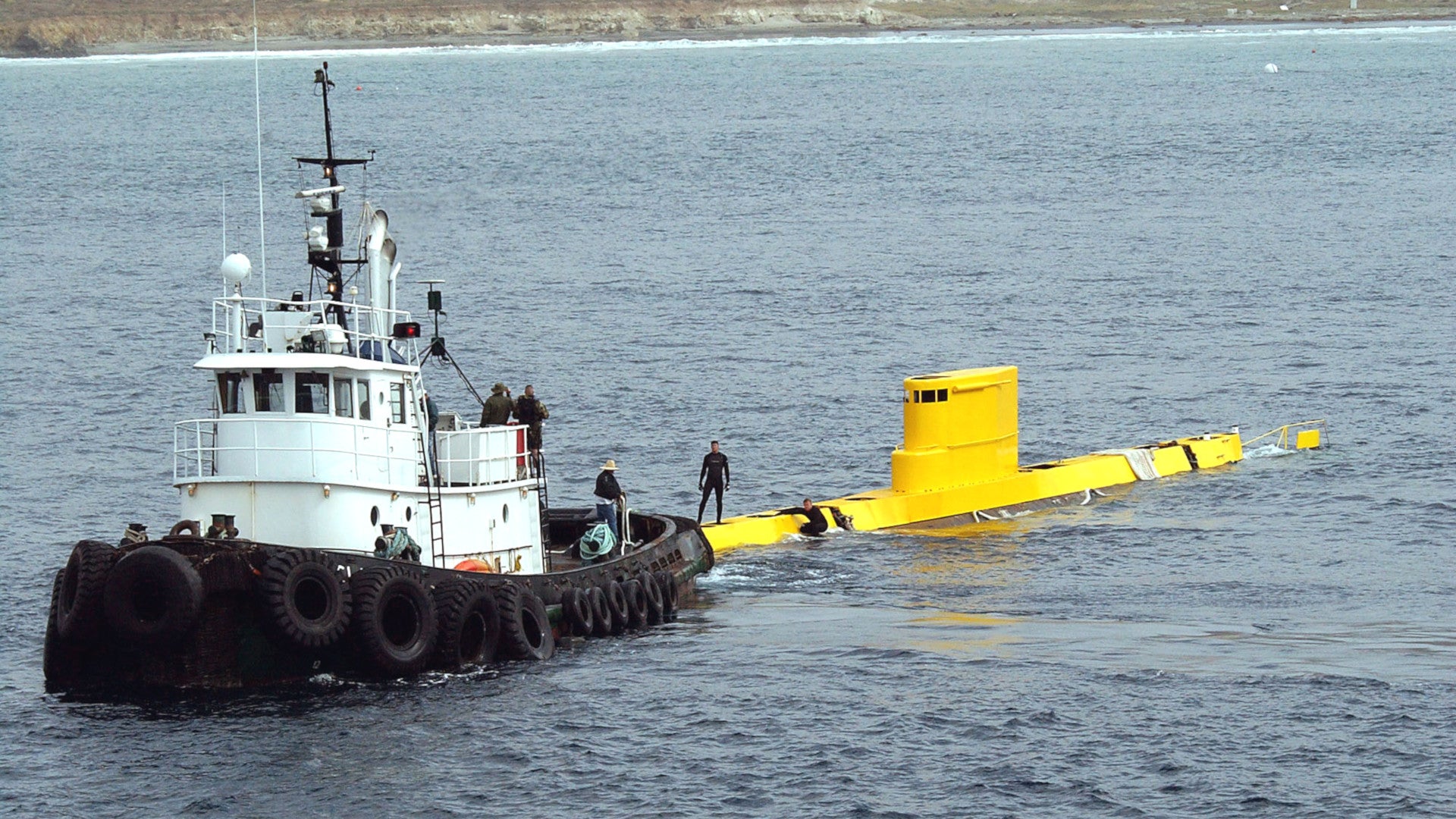Images of what appeared to be a bright yellow submarine – with no sign of any Beatles on board – under tow off San Clemente Island, near San Diego, California, have recently been making the rounds online. As it turns out, the craft in question was actually a unique U.S. Navy test target with the same general size and shape as a North Korean Sang-O-class submarine.
H.I. Sutton, author and expert on all things military that operate underwater, originally suggested that the target submarine might have been an actual captured Sang-O that had outlived its usefulness for technical exploitation and ended up in a destructive test in a post on his website on Feb. 6, 2019. He has since corrected that piece, replacing it with a great, in-depth profile of what was actually known as the Weapon Set-To-hit Threat Target (WSTTT).
The Navy began work on the WSTTT in San Diego in the 2002 Fiscal Year and had the mock submarine completed and delivered to the service’s Operational Test and Evaluation Force (OPTEVFOR) sometime between 2003 and 2004. The resulting craft was a full-size steel surrogate of a diesel-electric submarine, with the full program costing approximately $11 million in total, according to Sutton.
The immediate impetus for building the target submarine was to support the development of the Mk 54 lightweight torpedo, as well as improvements to the Mk 48 heavyweight torpedo. Personnel could submerge the craft for testing and then raise it back up to recover it afterward. In 2004, the Navy released a pair of pictures showing a tug towing the WSTTT into position and crews then submerging it in place for just such a test in the Pacific Ocean near San Clemente Island.

“The platform allows unarmed ASW [anti-submarine warfare] torpedos to impact it without any explosion,” a caption for one of the pictures in the October 2004 edition of All Hands, the Navy’s official magazine, explained. It’s not clear how much damage the target would still sustain from the physical impact of a warhead-less torpedo.
By every indication, the approximately 115-feet long target submarine is a dead ringer for a Sang-O, but it is unclear why the Navy chose this particular design to base the target on. It’s certainly not a bad choice as it is the most numerous type in North Korean service and is capable of operating as a small, littoral attack submarine, as well as a platform for inserting special operations forces and clandestine operatives.
In 1996, South Korea had captured one of these boats after it ran aground near the coastal town of Gangneung. The incident touched off a nearly 50-day manhunt. South Korean police captured one North Korean commando, who later defected.

The rest of the infiltration team on the submarine apparently executed the boat’s crew, before attempting to continue with their mission. South Korean troops killed 13 more North Koreans in nine separate incidents, losing eight of their own in the process, while a 14th individual apparently escaped back to North Korea. The Sang-O is now on public display at Tongil Park near Gangneung.
North Korean submarines continue to represent a significant threat to the South Koreans, as well as their American allies. One of North Korea’s submarines, such as one of the Sang-O-class boats, was likely responsible for the sinking of the South Korean Navy’s Pohang-class corvette
Cheonan in 2010, which resulted in the deaths of 46 of the ship’s crew.
Basing the WSTTT on a known threat would have certainly have given the U.S. Navy an opportunity to make the evaluations of the Mk 54 and improved Mk 48s more representative of potential real-world operations, as well as offer a chance to simply see how well either weapon might work against a Sang-O-sized target.
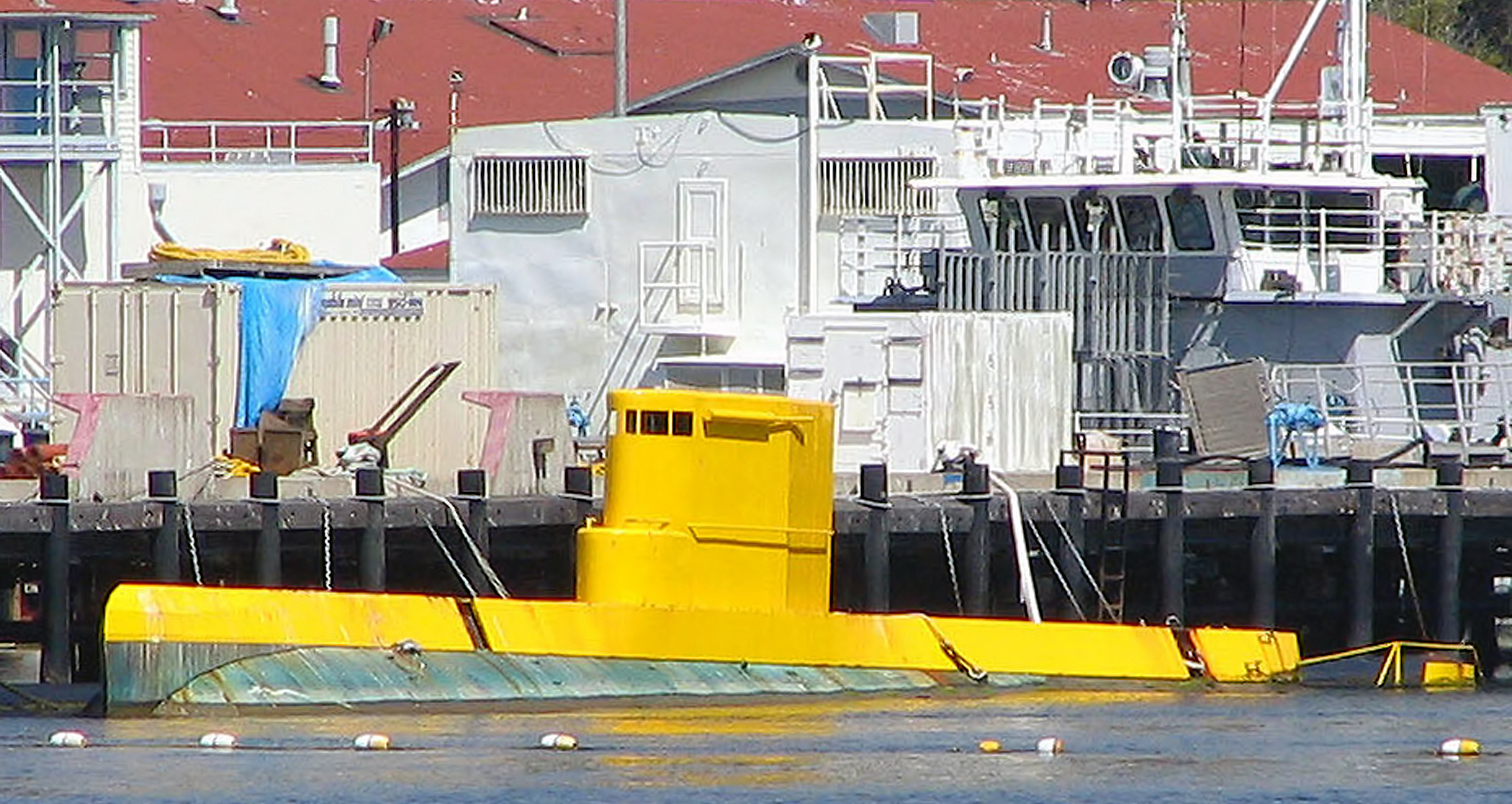
Whatever the case, the Navy’s time experimenting with the WSTTT turned out to be relatively brief. In 2006, she sank for real within the Southern California Offshore Range (SCORE) near San Clemente due to an unspecified malfunction during a test of a Mk 54 torpedo, according to Sutton. The next year, the Navy made plans to salvage it, but scrapped those plans due to budgetary constraints, according to an article in the July 2009 issue of Faceplate, the official newsletter of U.S. Navy divers and salvors.
In January 2009, a Navy salvage team aboard the USNS Navajo had used the Deep Drone remotely operated vehicle (ROV) to inspect the wreck and assess its material condition in case the service wanted to make another attempt to raise it. There’s no indication the Navy has made any attempt to retrieve the WSTTT.
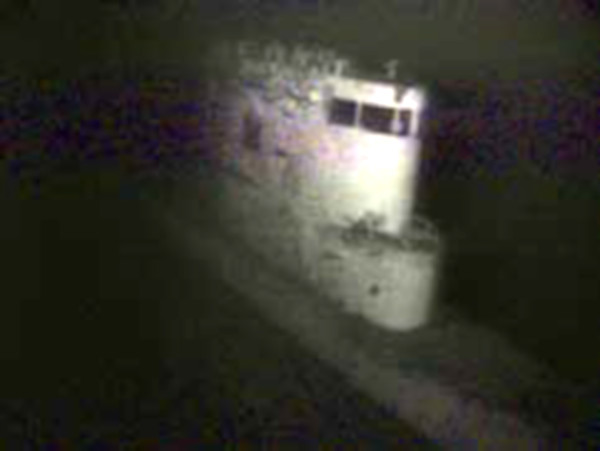
In 2011, the Navy took delivery of an entirely new target submarine called the Mobile Anti-Submarine Training Target (MASTT) from U.K. firm MSubs, which is now part of the U.S.-based Submergence Group. Around 75-feet long and weighting 65 tons, the electrically-powered MASTT is the largest known unmanned underwater vessel and is superior to the WSTTT in almost every respect and notably has the ability to operate under its own power.
Personnel can maneuver it and change its depth remotely, making it even more flexible. With its lead-acid batteries fully charged, the unmanned target submarine has a maximum underwater range of more than 65 miles and a submerged cruising speed of around three-and-a-half miles per hour.
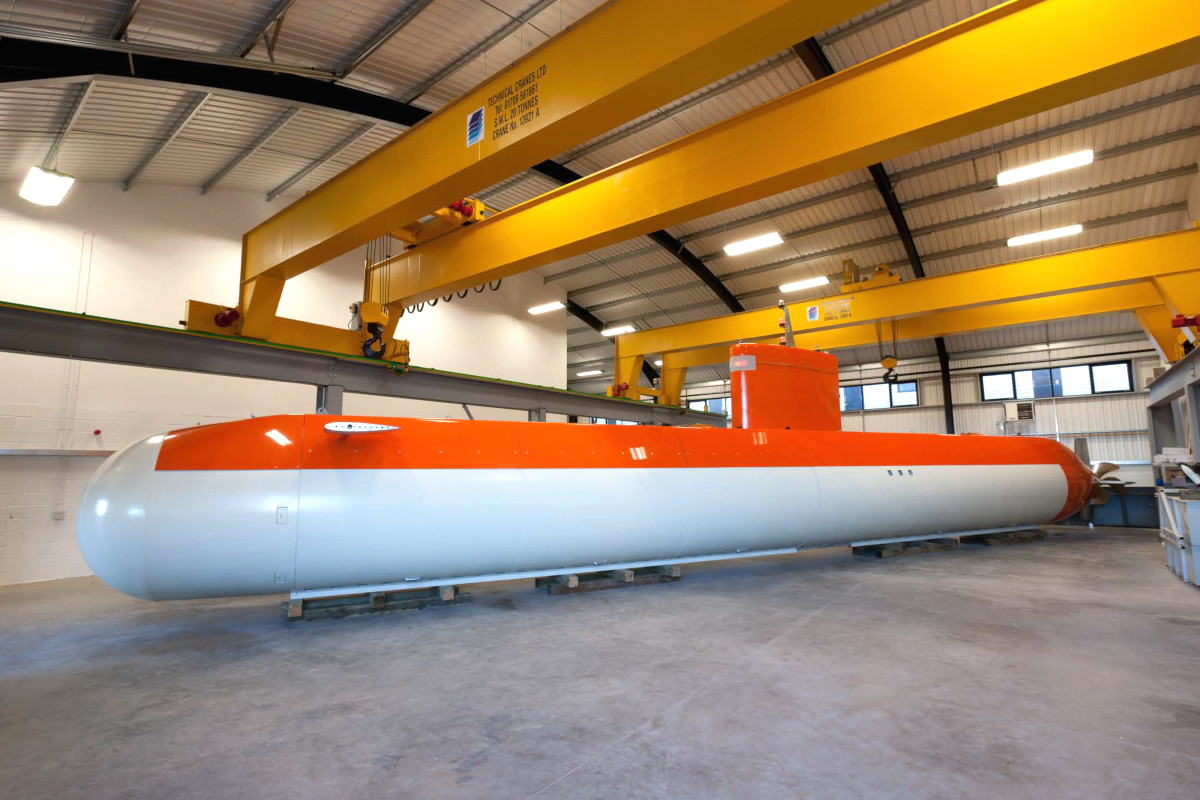
After receiving the MASTT, the Navy first sent it to the Acoustic Research Detachment (ARD), which is situated along a lake in landlocked Bayview, Idaho, for 11 months of testing and evaluation. This unusual and secretive facility is a key facility for the development of new Navy surface ships and submarines and you can read about it in more depth here. In 2012, the MASTT went to the Naval Undersea Warfare Center (NUWC) in San Diego for additional tests, which is where the Navy had kept the WSTTT before it sank.
The MASTT completed its final assessment in 2015. The unmanned submarine spent seven hours underwater during that 12-day evaluation, the longest it had ever been submerged, according to an article from CRUSER News, the newsletter of the Naval Postgraduate School. It also performed its longest single trip on the surface, covering approximately 15 miles.
“This was the first time MASTT was operated without Original Equipment Manufacturer support,” the test director for the Fleet Assessment, who the article did not name, told CRUSER News. “The team demonstrated the ability to independently operate, maintain, and troubleshoot the MASTT system while at-sea. They also showed they could rapidly reprogram the vehicle and change run parameters to meet customer requirements.”
During the evaluation, an Arleigh Burke-class guided-missile destroyer and P-3C Orion patrol aircraft both demonstrated their ability to track the MASTT as if it were an actual threat submarine. There is no indication that they launched any practice or live weapon at the unmanned submarine during this testing, though.
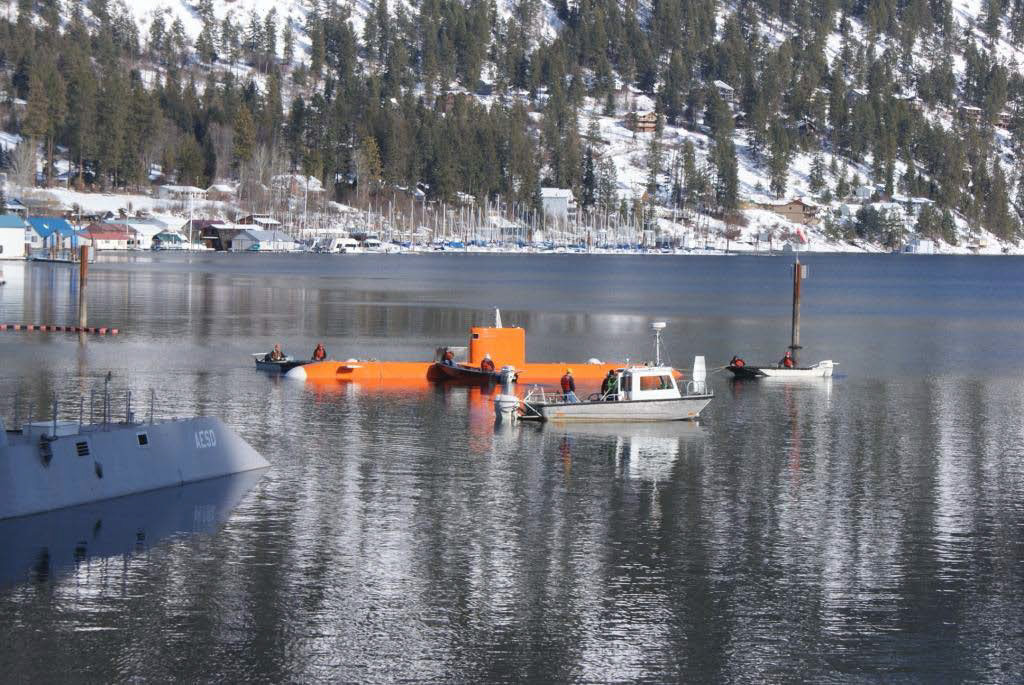
The Navy does not appear to have purchased any more target submarines since then, but this could change in the near future. The service is growing increasingly concerned about submarine developments around the world, especially among potential opponents such as Russian and China. Both of those countries are developing increasingly hard to detect diesel-electric designs with advanced air-independent propulsion systems, as well as nuclear-powered types. Many of these submarines are also available for export, expanding the potential pool of future submarine threats.
In November 2018, U.S. Navy Vice Admiral Charles Richards, the Navy’s Commander, Submarine Forces, announced his intention to establish a dedicated aggressor submarine squadron to focus on mimicking those potential threats in order to help train American attack submarine crews. Since the Navy does not presently operate any diesel-electric submarines of its own anymore, it might decide to purchase new manned or unmanned types to support these training exercises down the road. It could also hire firms such as MSubs and the Submergence Group to actually operate these submarines during drills, akin to the U.S. military’s growing use of contractor-owned and operated aircraft in aerial training exercises.
The Navy’s yellow target submarine, however, looks set to stay right where it lies on the bottom of the Pacific Ocean near San Clemente Island.
Contact the author: joe@thedrive.com
